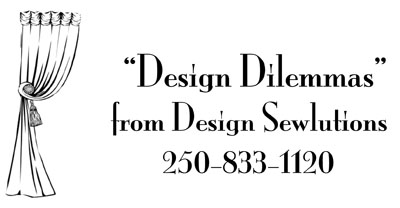Because this is a re-print of my column, Part 1 is below as it was published 2 weeks ago. Please read it first.
Now that you have set the task and ambient lighting in your rooms, go back and look again and decide if the room needs any Mood lighting. Are there some very dark corners? Consider a pot light shining up into a large green plant. Very dramatic and very inexpensive. Is there a great painting on one wall? Perhaps an overhead light is needed to highlight this. Don’t overdo it though, just because there is a corner doesn’t mean you have to light it.
Your lighting in each room needs to be both direct and indirect, of various intensities and at various heights. The direct lighting is that which lights a specific task, ie a light over the music on the piano. Indirect would be the light that is in the ceiling of the hallway. In both these instances, the light shines down. Make sure you have some light that shines up as well- some lamp shades direct light in both directions. ( NOT the floor lamps that look like a plate on a stick... leave those in the store, please). If all the lighting in the room is directed in one direction and sits at one level the room can appear cave like and very heavy.
The most challenging lighting I ever did was a very large family room/dining room in a home in Calgary. When we were done there were 21 different light sources in the room. (This is not just table or floor lights, this includes sconces, overheads and pot lights). They would never all be on at the same time, but each had a specific purpose and it allowed the homeowner to change the lighting of the room quickly depending on the many tasks that took place in the room.
Speaking to several people at lighting stores in the area, a reoccurring comment is that new home builders or renovators rarely put enough light outlets into the rooms in the initial planning and have to ‘fix’ the problem later. They realize, for example, that there is not enough light in the hallway for Grandma to see where she is going. Here is another instance of how important it is to use the professionals that are available to you. Take your room task list and floor plan to a good lighting store and ask for advice.
And now that you have the lighting fixtures in place, buy some fluorescent bulbs and some natural spectrum bulbs and decide what kind of light works best for the room.
If you would like a blank ‘Room Usage Task List’ to help you get started, e-mail me at info@Designsewlutions.ca.

